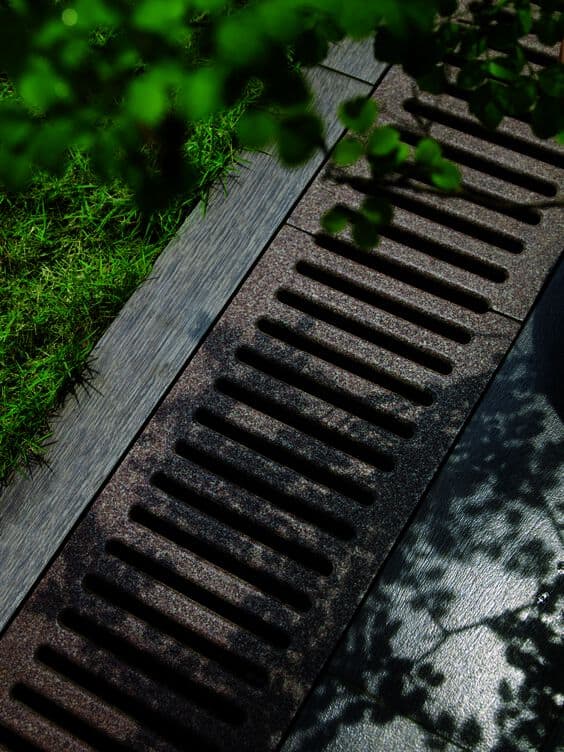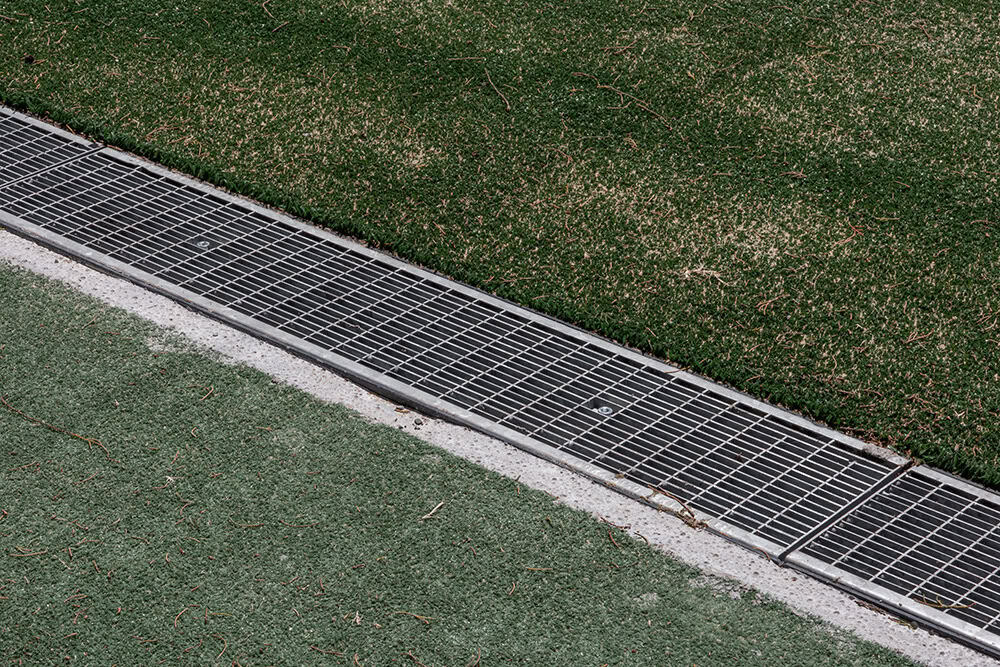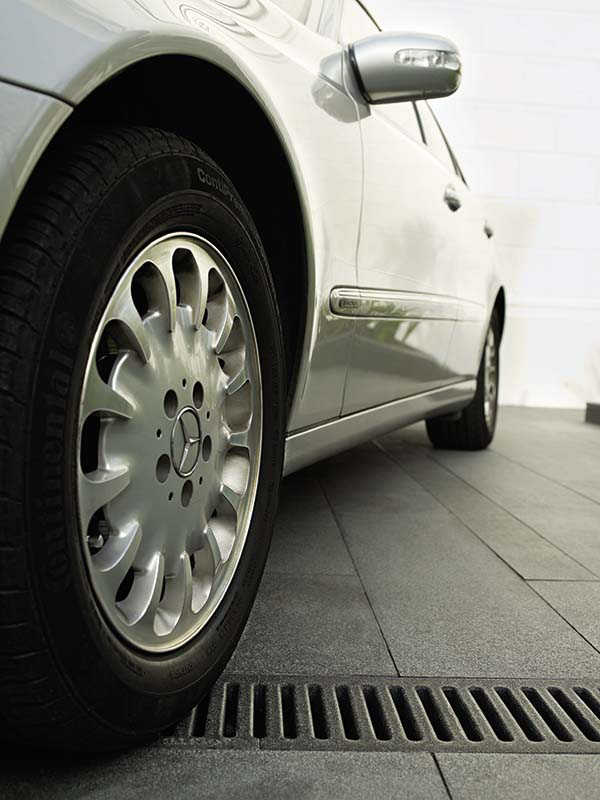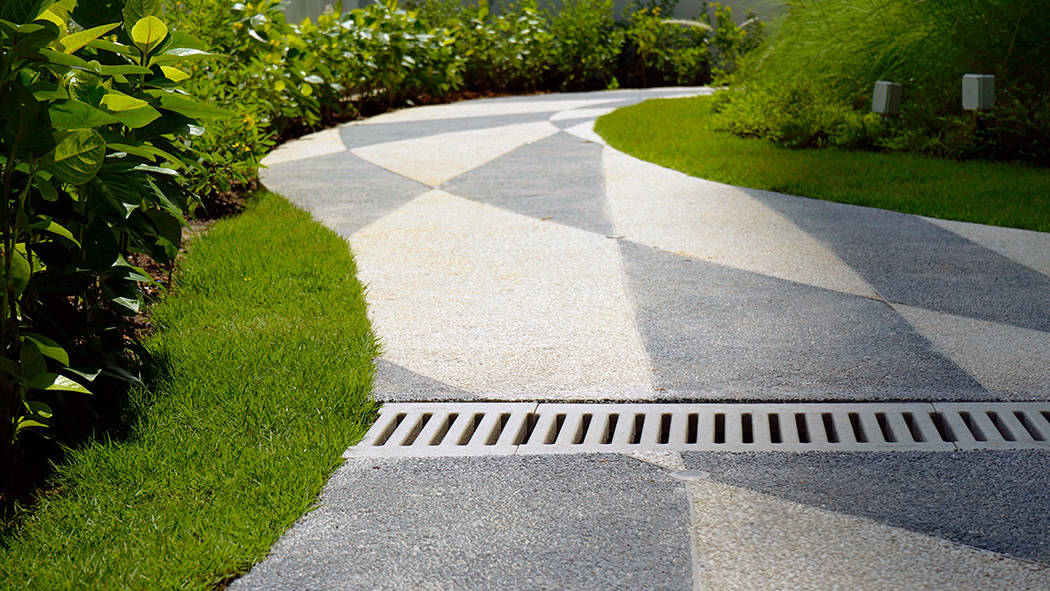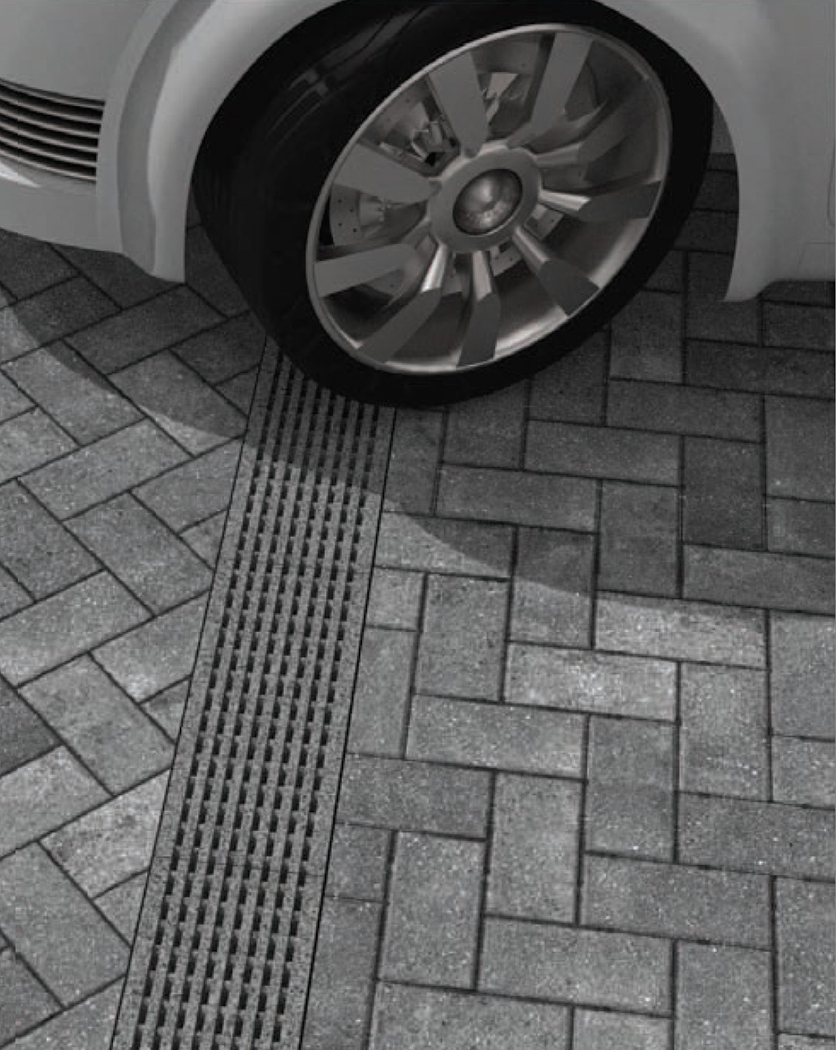Overlooking your garage drainage can have major consequences. Installing and maintaining a suitable drain can prevent serious damage to your home and belongings. In this article, we will take you through the steps of selecting an adequate garage trench drain.
How does water get into a garage?
Vehicles and foot traffic are often entering and exiting the garage, as well as the garage door presents a large open entrance.
Water can travel in through car tyres, or being washed in. Even when closed, water can leak through the gap at the base of the garage door. Especially when a driveway has a negative slope toward the garage door. If a drain is not installed in front of the garage, water will run down the slope and pool in front or potentially run into the garage.
Why you need a garage drain
Pooling water creates an immediate hazard, and potentially over time long term costly damage. Slipping hazards and the creation of a moist environment that attracts pests such as mosquitos are just some of the issues pooling water presents. Over time, moisture can present the risk of mould, as well as damage to the foundation of your house.
Proper drainage is critical in any garage situation, a good system will prevent any water from seeping into your garage.
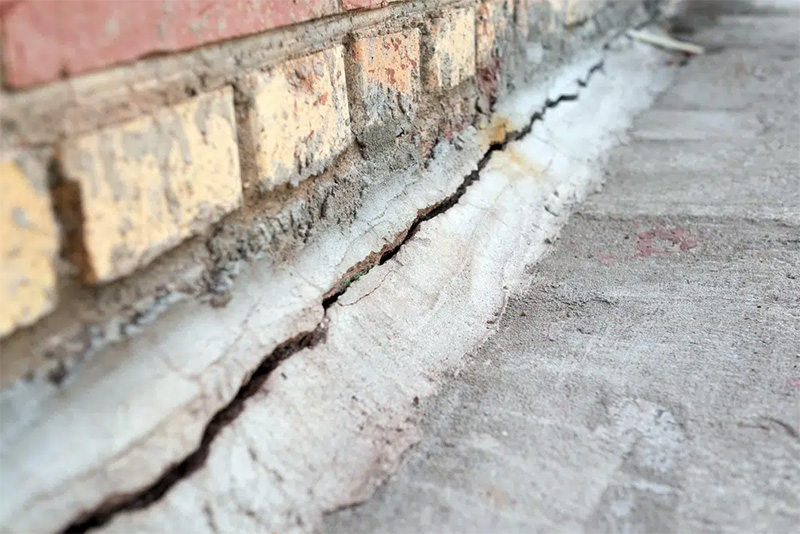
Installing Garage Trench Drains
Choosing the right drainage system for your driveway involves considering several factors. These factors include the slope of your driveway, the amount of rainfall in your area, and the overall design aesthetic you want to achieve. Additionally, it’s essential to weigh the pros and cons of each system to ensure you make an informed decision.
When selecting a driveway drainage system, consider the slope of your driveway. A steeper slope may require a more robust drainage system to effectively redirect water. This is because water tends to flow faster on steeper slopes, increasing the need for a system that can handle the higher volume and velocity of water. On the other hand, if your driveway has a gentle slope, a less complex drainage system may suffice.
In addition to the slope, the amount of rainfall in your area is another crucial factor to consider. If you live in an area with heavy rainfall, you’ll need a drainage system that can handle a larger volume of water. This is particularly important to prevent water from pooling on your driveway, which can cause damage over time. Conversely, if you live in a drier climate with minimal rainfall, a simpler drainage system may be sufficient.
Lastly, consider the overall design aesthetic you want for your driveway. While functionality is key, it’s also important to choose a drainage system that complements the visual appeal of your driveway. Some drainage systems, such as trench drains, offer customisable options to blend seamlessly with your driveway’s design. This allows you to maintain a cohesive and visually pleasing look while ensuring effective water management.
Selecting the Correct Size
Trench drains are available in a variety of widths & depths. Most garage drains use widths between 100mm – 150mm. Larger drains can be utilised if a larger volume of water needs to be drained. Exact specifications will depend on various conditions such as rainfall & slope of your driveway.
